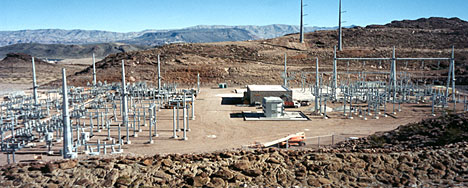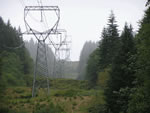
|
|
|
|
|
Electric Transmission and Transmission FacilitiesElectric power transmission is the process by which electricity is transported over long distances to consumers. New electric transmission facilities might be required for some new solar energy power plants. Electric TransmissionElectric power transmission is the process by which large amounts of electricity produced at power plants, such as industrial-scale solar facilities, is transported over long distances for eventual use by consumers. In North America, electricity is sent from power plants to the North American transmission grid, a vast network of electric power lines and associated facilities in the United States, Canada, and Mexico. Due to the large amount of power involved, and the properties of electricity, transmission normally takes place at high voltage (69 kV or above). Electricity is usually shipped to a substation near a populated area. At the substation, the high voltage electricity is converted to lower voltages suitable for consumer use, and then shipped to end users through (relatively) low-voltage electric distribution lines. For newly constructed solar energy power plants, if no existing suitable transmission facilities were available, new transmission lines and associated facilities would be required. The construction, operation, and decommissioning of high-voltage transmission lines and associated facilities would create a range of environmental impacts. The type and magnitude of the impacts associated with transmission line construction, operation, and decommissioning would vary depending on line type and size, as well as the length of the transmission line, and a variety of other site-specific factors. The main components of high-voltage electric transmission lines and associated facilities include: Transmission TowersConductors (Power lines)Conductors are the power lines that carry the electricity to and through the grid to consumers. Generally, several conductors are strung on a tower for each electrical circuit. Conductors are constructed primarily of twisted metal strands, but newer conductors may incorporate ceramic fibers in a matrix of aluminum for added strength with lighter weight. Substations
 Substation at a Photovoltaic Facility - Interactive Panorama. Source: Argonne National Laboratory Rights of Way (ROWs)Access RoadsAccess routes to transmission line structures for both line construction and maintenance are normally required, and may be paved or gravel. Vegetation clearing and/or recontouring of land may be required for access road construction. Additional temporary roads may also be needed during the construction and decommissioning phases of a transmission line project. For More InformationMore information about electric transmission and detailed descriptions of transmission facility components are available in the following technical report.
|







